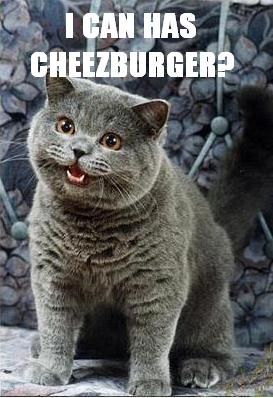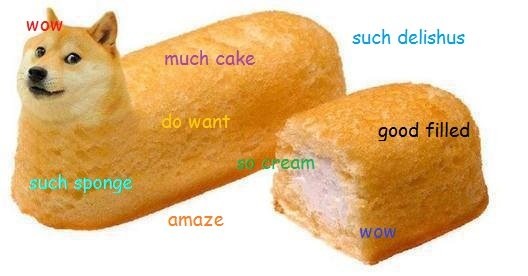Cats comprise some of the most popular content on the Internet. This is a well-documented phenomenon, but its precise reason has remained elusive. Cat culture came into its own in the era AW—After Web, decidedly a cuter time—and has even superseded what came before it, such as the publication Cat Fancy, which shuttered its litter box. Internet cats bring joy to the web: they have all the LOLs, glitter, and adorableness any user could ask for—and in meme form, they’re truly hypoallergenic.
Unlike the content Facebook advocates—real names, offline events, and #humblebrag status updates—which has repeatedly been cited for causing depression and FOMO, cat content points inward, toward the internet. While Facebook wants to be a mirror of the real world, AFK, cats reflect the internet itself and continue to embody some of the web’s most cherished values, such as user-created content and remixes. Indeed, the barrier for entry into the creation of cat content is low: all you need are a cat and a cell phone, or if that fails, you can probably find a good cat photo to repurpose.
Cats, of course, were on the Internet from the very beginning. The Internet Cats Family Tree by Helene Dams accompanies Olia Lialina and Dragan Espenschied’s book, Digital Folklore. The book, currently the subject of an exhibition at Hartware MedienKunstVerein, dissects early web culture, which necessitates tracing an imaginary lineage of cats on the Internet. The 1990s web was full of cat-breeder websites, tributes to lost pets who walked over “The Rainbow Bridge“, and other assorted fan pages.
But cat culture did not truly flourish until the launch of YouTube and the emergence of LOLcats. LOLcats are still images of cats with “cheezburger” or internet language captions over the images (also called macros). Cheezburger memes, combined with the feline cellphone videos, productions, and remixes that populate YouTube, continue to compose the bulk of Caturday content. Cats are the subject of the most iconic memes ever produced and perhaps even helped to define meme form.
Every LOLcat image macro or video leads further into the Internet with infinite search results, algorithmically related content, or another prompt (“did u see this??”). Likewise, every cat meme is an invitation to make another cat meme, for your own clever take on Happy Cat, Grumpy Cat, or Ceiling Cat or a re-edit of Nononono Cat, OMG Cat, or Keyboard Cat. The Procatinator, a website that serves as a distraction dispenser, takes its user from one cat meme to the next with well-paired musical accompaniment.
Artists too have taken up the cause of the Internet cat in a Pop-art gesture of reconsidering and recontextualizing mainstream content. Alexandra Macdonnell’s The Cat Hall of Fame (warning: the audio will freak out your IRL cats) is an auto-scrolling tour of the internet’s finest, from cats we can name, like Lil Bub or Long Cat, to the unsung heroes of the feline web, like anonymous cats scratching litter boxes, playing with balls, or tethered to balloons. The web-based work subtly covers the history of internet cats in a decidedly ahistorical way—images made in the 1990s are next to twenty-first-century feline super-memes, making the page non-hierarchical.
PurrPurr, meanwhile, invents strange cat weirdness with their project Catflakes. Obviously playing on cat mania, Catflakes diverges from preexisting cat culture to create its own Web-specific form. With one button at the bottom of its control panel, however, Catflakes pays homage to a catlebrity, Grumpy Cat.
In 2012, meatspace[1] finally became so jealous of Internet cats that The Internet Cat Video Festival was born at the Walker Art Center in Minneapolis. The premise was simple: watch cat videos AFK among your peer group of ravenous cat enthusiasts. The festival continued and spread, outside of browser windows, to cities all over the United States and abroad.
The gauntlet of interpreting internet cats IRL is currently being taken up by the exhibition How Cats Took Over the Internet at the Museum of the Moving Image in New York. The exhibition “[t]ouches on concepts like anthropomorphism, the aesthetics of cuteness, the Bored at Work Network, and the rise of user-generated content” in order to “unearth why images and videos of the feline kind have transfixed a generation of web users.”[2] The exhibition features a twenty-year-long timeline from 1995 to the present of Internet cat trends and landmarks, showing the deep and ongoing relationship of cats to the web.
Despite the momentary blip that was the Doge meme beginning in 2013, in which a Shiba Inu dog took center stage with its own internet language that some considered to be more sophisticated than cheezburger grammar, cats endure.
Post a cat video, and you will see more posted in return. Sending an email with a cat GIF is nearly the same as saying, “Hello, I hope you’re well” but more adorable. If you have a feel, there’s a Pusheen for that. Cats themselves, aside from alternative spellings and irregular grammar, form the language the internet speaks.
——
[1] The ‘real,’ offline world
[2] Museum of the Moving Image, “Exhibitions,” “How Cats Took Over the Internet,” https://www.movingimage.us/exhibitions/2015/08/07/detail/how-cats-took-over-the-internet/






